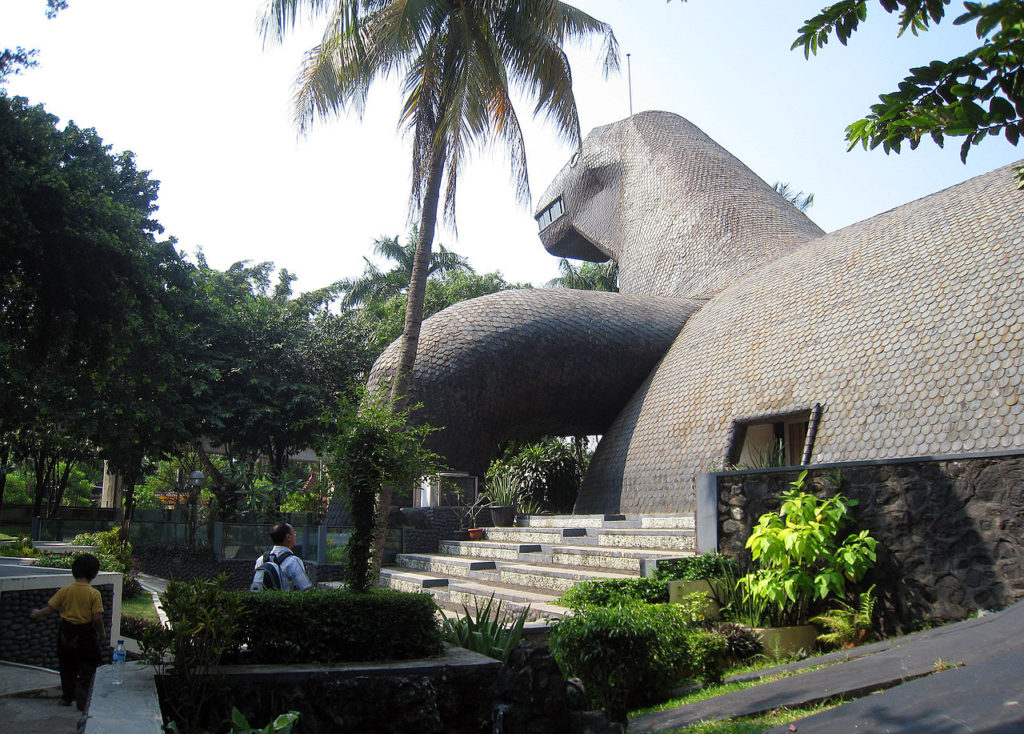Construction of the museum began on October 1, 1975, finished on 1 July 1976, and officially inaugurated by President Suharto on 20 April 1978. The museum was built to provide information and education on Indonesian animal diversity.
The museum is popularly nicknamed as “Komodo museum” after the design of the main building that took the shape of a giant Komodo dragon, the world’s largest lizard endemic to Indonesian island of Komodo.
Initially the museum displayed the collection of taxidermed animals endemic and native to Indonesia, such as the tiger, babirusa, Komodo dragon, and bird of paradise. The museum also displayed the diorama of several ecosystems of animal habitats of Indonesian archipelago, including rainforest, mangrove swamp, and savanna.
 On 2000, the park surrounding the museum was transformed into a reptile park, with a collection of living reptiles and amphibians; including numbers of venomous snakes, phytons, crocodiles and Komodo dragon.
On 2000, the park surrounding the museum was transformed into a reptile park, with a collection of living reptiles and amphibians; including numbers of venomous snakes, phytons, crocodiles and Komodo dragon.
There are numbers of terrariums containing reptiles, mainly snakes and lizards, and also several large enclosures containing large reptiles; such as saltwater crocodile, python, and Komodo dragon. There is also a petting zoo, where visitors could touch, pet and take photographs with reptiles, such as tortoise, iguana and non-venomous snakes.
On 2015, the museum undergone major make-over and restoration. Initially the museum displayed a diverse collection of preserved animals, the collection is focused only on reptiles and amphibian, with main focus on the Komodo dragon as the museum’s main attraction.
According to Wikipedia














